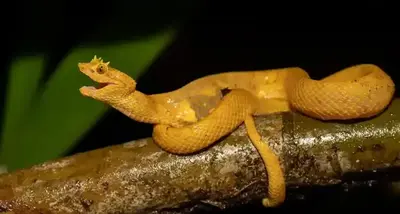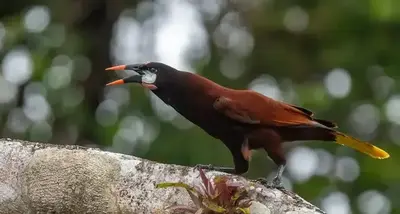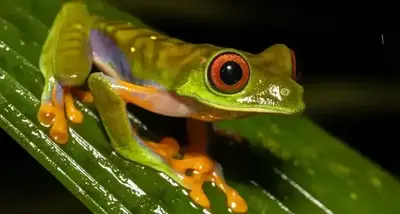La Selva Biological Station
Rainforest Ecolodge & Research Center
- 1600 hectares of protected old-growth and recovering wet lowland tropical forest
- 1000+ hectares old-growth primary rainforest
- 61 km of trails available to visitors
- 24 hour access to trails
- Borders Braulio Carillo National Park
Table of Contents
La Selva Research Station
La Selva Research Station is one of the most important tropical research centers in the world and a premier destination for wildlife tourism in Costa Rica. Located in the Caribbean lowlands of Sarapiquí, this renowned field station protects over 1,600 hectares of tropical wet forest (lowland rainforest)—an ecosystem bursting with frogs, birds, monkeys, and rare plant life. Owned and operated by the Organization for Tropical Studies (OTS), La Selva combines cutting-edge ecological research with immersive nature experiences. Just 1.5 to 2 hours from San José, it offers easy access to some of the richest biodiversity on Earth, making it a must-visit for herpers, birders, photographers, and eco-travelers seeking an authentic rainforest adventure. If you’re exploring multiple lowland rainforest destinations, also consider Yatama Rainforest Ecolodge and Costa Rican Amphibian Research Center (CRARC), both located within the Caribbean lowlands.
About La Selva
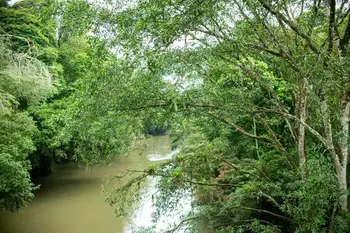
La Selva Biological Station is one of the premier destinations for wildlife-focused travel and ecological research in the Neotropics. Protecting over 1,600 hectares of primary and secondary rainforest in Costa Rica’s Caribbean lowlands, La Selva offers a rare opportunity to experience intact lowland tropical rainforest while contributing to long-term conservation efforts. From guided tours through lush jungle trails to independent wildlife photography and herping expeditions, visitors to La Selva enjoy extraordinary access to biodiversity, science, and natural wonder.
A Vision for Conservation and Ecotourism
La Selva’s legacy began in 1953 as a private reserve dedicated to sustainable forestry, but it became a global model of conservation when the Organization for Tropical Studies (OTS) transformed it into a biological field station in 1968. As one of the first private protected areas in Costa Rica, La Selva helped pioneer the integration of scientific research, habitat preservation, and ecotourism. Today, the station plays a central role in regional conservation networks, forming a vital link in the San Juan–La Selva Biological Corridor that supports the movement of species between Braulio Carrillo National Park and northern lowland forests.

While its core mission is scientific research, La Selva actively welcomes nature enthusiasts. Visitors directly support conservation by staying overnight, joining guided tours, and participating in environmental education. Trails, lodging, and programs are designed to allow eco-visitors to experience tropical biodiversity without compromising the integrity of the ecosystem.
By choosing to visit La Selva, travelers help ensure the station's long-term sustainability. Revenue from ecotourism directly supports forest protection, environmental education, and the infrastructure needed to host researchers and conservation programs. Simply by booking a tour or staying overnight, visitors contribute to the preservation of one of Costa Rica’s most valuable tropical ecosystems.
Location and Environment
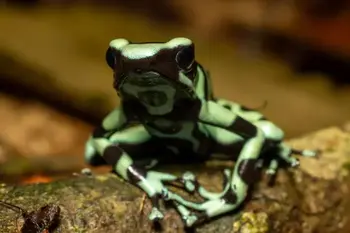
La Selva is located just south of Puerto Viejo de Sarapiquí in Costa Rica’s Heredia province, roughly a two-hour drive from San José. The station lies in the Caribbean lowlands at elevations ranging from 35 to 137 meters, where warm temperatures and high rainfall create a lush tropical wet forest.
The reserve spans about 1,600 hectares bordered by the Sarapiquí, Puerto Viejo, and Peje rivers, creating a natural buffer against development. Importantly, La Selva connects to Braulio Carrillo National Park via an elevational corridor that climbs over 2,800 meters to the summit of Barva Volcano. This continuous forest gradient supports exceptional biodiversity and allows species to shift ranges in response to climate or seasonal changes.
Approximately 63% of La Selva is old-growth primary forest, with massive buttressed trees, tangled vines, and towering canopy layers. The rest includes mature secondary forest, regenerating forest on former pasture and plantation lands, as well as experimental research plots. Trails cross a mosaic of microhabitats, from swampy lowlands to drier upland ridges, offering visitors a dynamic cross-section of rainforest ecology.
Birding La Selva
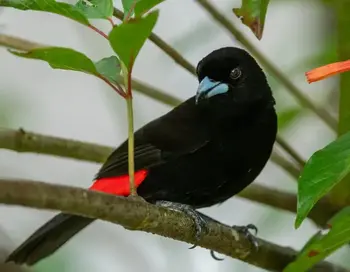
La Selva is legendary in the birding world, with over 470 species recorded within the reserve – more than half of all bird species found in Costa Rica. Its combination of primary lowland rainforest, riverine habitat, and proximity to an elevational gradient results in an extraordinarily rich avifauna.
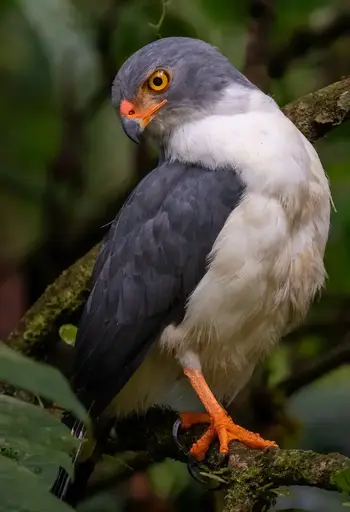
Common and Charismatic Bird Species
Birders can expect to see iconic species like Great Curassow, Keel-billed Toucan, Chestnut-mandibled Toucan, and Montezuma Oropendola. Mixed flocks bring trogons, motmots, tanagers, and manakins into view. Parrots, great green macaws and parakeets are regularly heard screeching overhead.
Specialty Bird Species
La Selva is a stronghold for the endangered Great Green Macaw (Ara ambiguus), best seen when almendro trees are fruiting. Other prized finds include Snowy Cotinga, Sunbittern, and over 30 species of hummingbirds
Tours and Access
Early morning birding tours and self-guided walks allow guests to explore at prime hours. Paved trails and clearings make birding accessible and enjoyable even in wet weather, while riverside spots and observation platforms (including the suspension bridge across Rio Puerto Viejo) offer great vantage points.
View A Partial Checklist of Birds Recorded at La Selva →Herping La Selva

La Selva is a herping hotspot and one of the best places in Costa Rica to observe tropical amphibians and reptiles. With over 130 species of herpetofauna documented, the station supports a remarkable diversity of frogs, snakes, lizards, turtles, and crocodilians across its varied microhabitats.
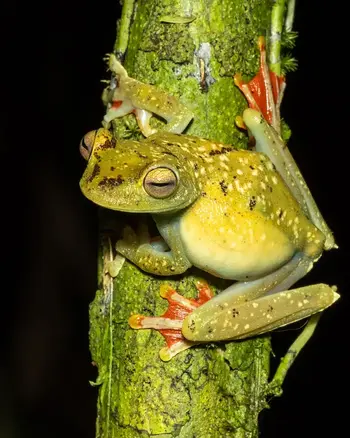
Guests are welcome to explore the trails unguided, day or night, a significant advantage for herpers who prefer to search for animals at their own pace and during the most productive hours after dark. The trails are well-maintained, and cemented, and offer access to a range of habitat types—ideal for targeting a variety of amphibians and reptiles.
Snakes and Lizards
La Selva is known for its snake diversity, with over 50 species recorded. While sightings are unpredictable, species such as the Eyelash Viper (Bothriechis nigroadspersus, formerly B. schlegelli), Blunt-headed Tree Snake (Imantodes cenchoa), Fer-de-lance (Bothrops asper) and Cat-eyed Snake (Leptodeira ornata) are regularly encountered. Daytime sightings include green iguanas, basilisks, various anoles, and the friendly little adorned graceful brown snake.
Crocodilians and Turtles
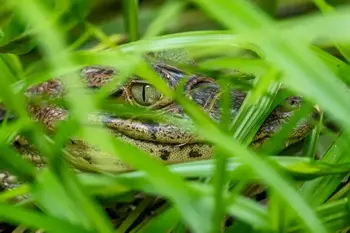
In addition to its impressive diversity of frogs, snakes, and lizards, La Selva is home to spectacled caimans and the occasional American crocodile, most often seen in the deeper stretches of the Sarapiquí or Puerto Viejo rivers. Several species of freshwater turtles also inhabit the reserve’s streams and ponds
Overnight guests can also explore the trails independently 24 hours a day. Staying multiple nights increases the chance of finding elusive or nocturnal species.
View A Partial Checklist of Reptiles Recorded at La Selva →Frogs and Toads

Night hikes reveal a chorus of amphibians, including species like the iconic Red-eyed Tree Frog (Agalychnis callidryas), and many other species of glass frogs, rain frogs, treefrogs, and toads. Wet seasons bring out explosive breeding events, and leaf litter or streamside searches can yield surprising finds.
View A Partial Checklist of Amphibians Recorded at La Selva →Mammals of La Selva
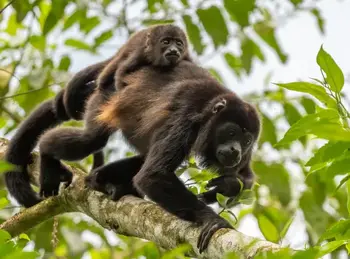
With 125 mammal species recorded, La Selva offers visitors a strong chance to see both arboreal and terrestrial wildlife.
Monkeys and Sloths
Three monkey species are regularly encountered: Mantled Howler, White-faced Capuchin, and Central American Spider Monkey. Hoffmann’s Two-toed Sloth is frequently seen in trees, while Three-toed Sloths are rarer but present.
Nocturnal Mammals
La Selva is a global hotspot for bat diversity, with 72 species recorded. Night skies and forest edges teem with insectivorous bats, and some diurnal roosts can be observed during guided walks.
Other commonly observed nocturnal mammals include opossums, kinkajous, racoons, and various small terestrial and arboreal rodents.
Ground Mammals and Carnivores
Agoutis and Collared Peccaries forage around the station grounds and throughout the forests. Red Brocket Deer are shy but sometimes seen on remote trails. Tayras, kinkajous, and coatis are among the smaller carnivores active by day or night. Wild cats including ocelots, pumas, and even jaguars have been confirmed at La Selva, though sightings are rare.
Iconic Species
While La Selva hosts hundreds of remarkable organisms, a few species stand out as particularly iconic for wildlife watchers:
- Red-eyed Tree Frog – A poster child for the rainforest, often seen near marshy areas at night. Listen for their distinctive calls.
- Strawberry Poison Frog – Brilliantly colored and active by day in leaf litter. These frogs are very common along nearly all trails, including around the developed areas. Listen for their "reep-reep-reep..." calls.
- Keel-billed Toucan – A vibrant canopy dweller and frequent photo subject. Listen for their call, which is often described as sounding like the croak of a bullfrog.
- Yellow-throated Toucan – The other common toucan found at La Selva. This bird has a very distinctive call...once you learn it, you'll always be aware of their presence.
- Great Green Macaw – Critically endangered and occasionally seen near fruiting trees. They're much more commonly seen flying overhead, as their squawks give away their presence, giving you plenty of warning to look up to see a pair flying side-by-side.
- Three Monkey Species – The iconic capuchin monkey, the loud howler monkey, and the endangered spider monkey can all be seen in a single day hike at La Selva.
- Eyelash Viper – A cryptic and colorful ambush predator, curled on low branches. Guides can point out the location of a previously seen individual, as these vipers tend to stay in one location for many days.
- Blue Morpho Butterfly – Iridescent and unmistakable as it glides through sunlit gaps.
- Two Species of Crocodilians – The spectacled caiman (Caiman crocodilus) can be found in marshy areas, while the American crocodile (Crocodylus acutus) are occasionally spotted in the Rio Puerto Viejo.
Accommodations

-
 Price: $118/night (June 2025 price). Includes dinner, breakfast, lunch, one natural history tour and taxes.
Price: $118/night (June 2025 price). Includes dinner, breakfast, lunch, one natural history tour and taxes.
-
 Beds: Most rooms have two beds that can sleep 1 to 2 people each.
Beds: Most rooms have two beds that can sleep 1 to 2 people each. -
 Check In/Out: Check In: 3:00 p.m., Check Out: 11:30 am.
Check In/Out: Check In: 3:00 p.m., Check Out: 11:30 am. -
 Safe, guarded and gated property
Safe, guarded and gated property
-
 Outlets for Electronics in rooms and shared kitchen and common/dining area.
Outlets for Electronics in rooms and shared kitchen and common/dining area.
-
 Wifi. available in guest rooms, and around main buildings.
Wifi. available in guest rooms, and around main buildings.
-
 Languages Spoken: English and Spanish
Languages Spoken: English and Spanish
-
 Meals: Three meals per day are included in the price of stay and are served in a main dining area. Breakfast from 6:00 a.m. to 7:30 a.m., lunch from 11:30 a.m. to 1:00 p.m., dinner from 6:00 p.m., to 7:00 p.m.
Meals: Three meals per day are included in the price of stay and are served in a main dining area. Breakfast from 6:00 a.m. to 7:30 a.m., lunch from 11:30 a.m. to 1:00 p.m., dinner from 6:00 p.m., to 7:00 p.m.
 Transportation to/from La Selva: Most overnight visitors choose to rent a car in San Jose and drive to La Selva. This is convenient for driving the approximately 1.5 km distance between the guest bedrooms and the main dining area and trail entrance. Alternatively, a bus can be taken from San Jose to Puerto Viejo de Sarapiqui, followed by a taxi to La Selva, or simply taking a taxi from San Jose to La Selva.
Transportation to/from La Selva: Most overnight visitors choose to rent a car in San Jose and drive to La Selva. This is convenient for driving the approximately 1.5 km distance between the guest bedrooms and the main dining area and trail entrance. Alternatively, a bus can be taken from San Jose to Puerto Viejo de Sarapiqui, followed by a taxi to La Selva, or simply taking a taxi from San Jose to La Selva.
 Bathroom: Private bathrooms in each room include shower (with hot water), sink, and toilet.
Bathroom: Private bathrooms in each room include shower (with hot water), sink, and toilet. Laundry: service available upon request for extra fee.
Laundry: service available upon request for extra fee.
La Selva in 360°
Click and drag your mouse on the images below to change the view perspective
360° Virtual Tour of La Selva
Trails of La Selva
La Selva’s extensive trail network is one of the station’s defining features and a major reason why the reserve is so accessible and rewarding for wildlife-focused visitors. With over 60 kilometers of maintained trails, including more than 16 kilometers of paved routes, La Selva offers safe and immersive access to a wide variety of rainforest microhabitats—day and night, rain or shine.
Trail Design and Accessibility

La Selva’s trail system is one of the most thoughtfully designed in any rainforest reserve. The network includes wide, flat walkways as well as narrower cemented paths that wind deep into the forest, totaling over 60 kilometers of maintained trails—16 kilometers of which are paved for all-weather use. These trails provide easy access to a broad range of habitats, and their design helps prevent erosion and limits the impact of thousands of annual visitors on the delicate forest floor.
Before visiting, I worried that paved trails would make the rainforest feel tamed or artificial—more like an urban park than a living jungle. But I was wrong. The narrow cement trails didn’t reduce the sense of remoteness; if anything, they enhanced it. Leaf litter and native vegetation grow right up to the trail’s edge, with no signs of trampling or degradation. Instead of breaking the immersion, the paved surfaces create a quiet, stable walking experience that allows you to focus on the forest, not your footing.
These trails also offer practical advantages. During the rainy season, they allow for comfortable footwear like trail shoes instead of knee-high rubber boots. That said, rubber boots are still advised at night due to the chance of encountering a fer-de-lance or columns of army ants, which occasionally use the trails as highways.
Overall, the paved trails at La Selva strike an ideal balance between access and protection. They let you move silently and respectfully through one of the world’s richest forests—without damaging the very ecosystem you came to experience.
A Diversity of Habitats
La Selva's trail system passes through a remarkable mosaic of habitats within the lowland rainforest biome. Visitors can explore primary forest with towering old-growth trees, as well as secondary forest regrowing from past agricultural use. Some trails skirt seasonally flooded swamps, while others cross slightly elevated ridges with well-drained clay soils and different plant communities. This habitat variety makes the trails ideal for observing changes in forest structure, microclimates, and species composition—all within relatively short walking distances.
Safety and Orientation
Well-marked trails, numbered intersections, and clear signage make it easy to navigate, even after dark. Guests staying overnight are granted 24-hour access to the trail system, a rare privilege in rainforest reserves. While station policy restricts nighttime use to the paved trails, these routes are so extensive and ecologically rich that most herpers and naturalists find no need to venture beyond them. The safety and orientation features—including the suspension bridge across the Río Puerto Viejo at the station entrance—make it possible to explore with confidence, whether guided or alone.
Tours of La Selva
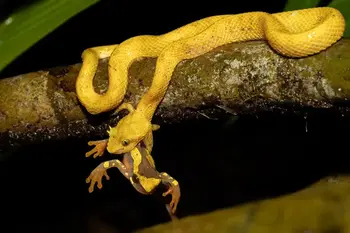
While visitors are free to explore La Selva's trail system on their own, guided hikes offer a deeper understanding of the forest and significantly increase the chances of spotting elusive wildlife. La Selva Biological Station offers a variety of guided tours led by expert naturalist guides. Day visitors are required to join a guided tour (for both safety and learning), whereas overnight guests receive a complimentary orientation walk and may explore certain trails on their own outside of tour times. The guides are bilingual and extremely knowledgeable, often sharing insights about ongoing research and the rainforest ecosystem while helping visitors spot camouflaged wildlife. Below are the main tours available at La Selva:
- Guided Daytime Nature Walks (Orientation Tour): These natural history walks are scheduled daily at 8:00 a.m. and 1:30 p.m., each lasting about 3 hours. A guided walk is included free with overnight stays (one per guest), serving as an orientation to the reserve’s trails and biodiversity. During these walks, the guide introduces visitors to La Selva’s rainforest environment, points out key research projects, and helps spot wildlife. It’s an immersive introduction where you might encounter anything from troupes of monkeys to hidden sloths – the guides know where animals tend to hang out. In fact, all three of the region’s monkey species (mantled howler, white-faced capuchin, and black-handed spider monkeys) inhabit La Selva, and past tours have sighted many other animals such as toucans, motmots, peccaries, and even a well-camouflaged Eyelash Viper resting by the trail. The orientation guides often share tips for finding wildlife (e.g. how to spot movement or eye-shine) and other tricks that you can use when you venture out on your own later. Group size for these walks is kept to about 12 people per guide to ensure everyone can follow along, and the paved trail network makes the hike accessible to most visitors (some trails are wheelchair-friendly).
- Early Morning Birding Tour: Given La Selva’s incredible bird diversity (roughly 470 species of birds recorded on site, a special birdwatching tour is offered at dawn for serious birders and nature lovers. This early bird tour begins around 5:45 a.m. and runs ~2 hours, capitalizing on the peak hour when birds are most active. Accompanied by a skilled birding guide, visitors explore various habitats – from dense primary forest to more open areas – to spot an array of tropical birds. You’ll have a chance to see colorful species such as trogons, toucans, motmots, hummingbirds, and other avian highlights. The guide will help pinpoint birds by their calls and movements, which greatly improves your chances of sighting elusive species. Many enthusiasts consider this dawn tour a must-do, as La Selva is renowned as one of Costa Rica’s premier birding destinations. (If interested in this tour, be sure to reserve in advance or sign up by the evening prior, as it requires a minimum number of participants and an early start.)
- Night Tour: The rainforest comes alive after dark, and La Selva’s night tours (7:00 p.m., ~2 hours) let visitors experience this nocturnal world. Equipped with flashlights, a guide leads you along the trails in search of creatures that only emerge at night. You’ll listen to a nocturnal symphony – the calls of frogs, croaking toads, and insects – while scanning for the telltale sparkle of eye-shine in the undergrowth. Common sightings include frogs, toads, and colorful tree frogs, as well as nocturnal reptiles like sleeping lizards or snakes (it's not unusual to spot an eyelash pit viper coiled on a branch at night). Guides also sometimes find roosting birds, bats, owls, huge moths, and other nocturnal wildlife. A night walk at La Selva can be a thrilling experience as you discover the rainforest’s “second shift” of animals that are seldom seen by day. (Like the birding tour, the night tour typically requires advance booking by 5:00 p.m. the same day to secure a spot.)
- Specialty Tours and Workshops: In addition to the standard scheduled walks, La Selva offers other guided experiences to cater to specific interests. Visitors can arrange private tours or custom guided hikes by request – for example, hiring a guide for a personal half-day or full-day tailored to photography, herpetology, or any wildlife theme of your choice. The station can even design multi-day custom itineraries with guided excursions if you have a particular focus in mind. Furthermore, La Selva’s education mission means they occasionally host workshops on topics like bird watching, nature photography, or tropical botany, led by resident naturalists or researchers. These in-depth programs (sometimes full-day) allow visitors to deepen their knowledge and skills in a field of interest. There are also “history walks” available – guided tours that delve into the history of La Selva and its role in conservation and research, giving context about how the reserve was established and the scientific work happening on site. All these specialty options can be coordinated through the reception or in advance when booking, and they are a great way to get a more personalized or thematic experience of the rainforest. (Note: A boat tour on the nearby Sarapiquí River can be arranged as well, but this is operated by an external provider and not led by La Selva’s own guides, so it’s usually considered a separate add-on.)
La Selva Biological Station YouTube Videos Playlist
7 YouTube videos from La Selva. Press play, then press ![]() (or Shift+N) on the video player to move to next video and
(or Shift+N) on the video player to move to next video and ![]() (or Shif+P) to move back to the previous video. Click the
(or Shif+P) to move back to the previous video. Click the ![]() icon in the top right corner of the player to view list of all videos.
icon in the top right corner of the player to view list of all videos.
Travel Guide to La Selva Research Station
Most international visitors to La Selva Biological Station arrive through Juan Santamaría International Airport (SJO) near San José. From there, travelers have several options to reach La Selva, located about 80 kilometers (50 miles) northeast in the Sarapiquí region. The journey typically takes 1.5 to 2.5 hours, depending on your chosen mode of transportation (sometimes much longer if there's traffic congestion, which is common in Costa Rica).
Option 1: Renting a Car (Most Convenient)
The easiest and most flexible way to reach La Selva is by renting a car at the airport and driving yourself. The route is straightforward: take Highway 32 north through Braulio Carrillo National Park, then turn north onto Route 4 for about 30 km. About 3km from Puerto Viejo de Sarapiqui, look for the sign that says “Estación Biológica La Selva” (as of June 2025, there was a bus stop with a La Selva sign on it). This road is called Calle Vieja on Google Maps. Follow this road and take your first left onto a dirt road. Follow this road about 1 km to the reception gate.
Having a rental car is especially useful because La Selva’s guest lodging is about 1.2 km from the main station complex, which includes the cafeteria, reception, and trail entrances. While you can walk this distance (about 15–20 minutes), a car allows for easy shuttling, especially in rainy conditions or when transporting gear.
To get to the lodging from the reception, if you are walking, you can take a trail approximately 1.2 km. If you are driving, you will take the dirt road you entered on back to Calle Vieja, but instead of turning right to get back to the highway, you will go left and go down the dirt road for about 1km until you see a guarded gate on the left. The guard will open the gate for you.
Option 2: Taxi from the Airport (Simple but Costlier)
You can also take a taxi directly from SJO to La Selva, which offers a door-to-door experience without needing to drive. However, this method has a few caveats:
- Most taxi drivers will not be familiar with the exact location of La Selva, so be prepared to help navigate using Google Maps or Waze. Search for “La Selva Biological Station, OTS.”
- Once you arrive at the station entrance, you'll need to check in at reception, then ask the driver to wait and drive you an additional 1.2 km to the guest lodging area.
- Expect to pay at least $100 USD. Your actual fair will depend on timing, route, and/or driver negotiation.
- This option works well for those traveling light and seeking a private, stress-free journey without the responsibilities of car rental. Car rentals can cost in excess of $1000 for trips greater than 1 week, so even $100 taxi rides may end up being less than a car rental.
Option 3: Public Bus (Most Budget-Friendly)
The cheapest way to reach La Selva is via a combination of taxi and public bus:
-
From SJO to the Gran Terminal del Caribe (San José):
- Take a taxi from the airport directly to the Gran Terminal del Caribe bus station in San José. This typically costs $20–30 USD. You will likely be approached by many taxi drivers or their associates as you exit the airport, so this gives you a great opportunity to negotiate a price.
- Alternatively, take a local bus from SJO to the Tuasa terminal in central San José, then catch a short taxi ride from there to the Gran Terminal del Caribe.
-
From Gran Terminal del Caribe to Puerto Viejo de Sarapiquí:
- At the bus station, purchase a ticket to Puerto Viejo de Sarapiquí in Heredia province. Do not confuse this destination with Puerto Viejo de Talamanca, a different town on the Caribbean coast.
- The bus ride typically includes multiple stops and takes 2.5 to 3.5 hours, depending on traffic and day of the week (Although it can take much longer if there's traffic due to accidents, construction, police checkpoints etc.).
-
From Puerto Viejo de Sarapiquí to La Selva:
- Upon arrival, take a short taxi ride (about 3 km) to La Selva Biological Station. Most drivers in town are familiar with the destination, but be prepared to give directions just in case.
This method requires more logistical effort but costs significantly less than a taxi or car rental. It is ideal for solo travelers or those on a tighter budget.
❓Frequently Asked Questions (FAQs) About La Selva Biological Research Station
-
Where is La Selva Biological Station located?
La Selva Biological Station is located in the lowland rainforests of northeastern Costa Rica, just outside the town of Puerto Viejo de Sarapiquí in Heredia province. It’s about a 1.5–2 hour drive from San José.
-
How do I get to La Selva from San José?
The easiest way to reach La Selva from San José is by rental car via Highway 32. You can also take a direct taxi or use public transportation via the Gran Terminal del Caribe with a connecting bus to Puerto Viejo de Sarapiquí, followed by a short taxi ride. Get more details in the travel section or get general travel information in our Costa Rica Travel Guide
-
Can I visit La Selva without a guide?
Yes, this is, arguably, one of the best reasons to visit La Selva! You can hike the trails day or night on your own. Tours are also available upon request, and as a guest, you are entitled to one full day tour to help you get acquainted with the trail system, learn about the environment, and get to see a lot of wildlife.
-
What types of guided tours are offered at La Selva?
La Selva offers natural history tours, early morning birding tours, and night walks. These are led by bilingual guides and focus on spotting wildlife and understanding rainforest ecology. Private and specialty tours are also available by request. Read more in our Tours section.
-
What kind of wildlife can I see at La Selva?
La Selva is home to over 470 bird species, 125 mammals, 130+ reptiles and amphibians, and countless insects. Common sightings include toucans, monkeys, sloths, poison dart frogs, and snakes like the eyelash viper.
-
Is La Selva good for herping and birdwatching?
Yes, La Selva is one of the best locations in Costa Rica for both herping and birding. Guests have 24-hour trail access, and guided night and early morning tours are available for wildlife viewing.
You can also combine your trip with a stay at the nearby Yatama Ecolodge for a more intimate stay in the rainforest, or head up to the mountains to visit the cloud forests in Monteverde or San Gerardo de Dota for exceptional bird watching.
-
Are the trails at La Selva accessible and easy to hike?
La Selva features over 60 km of trails, including more than 16 km of paved or concreted paths. Many are flat and accessible year-round, including some suitable for wheelchairs.
-
What kind of accommodations does La Selva offer?
La Selva offers simple but comfortable lodging, including dorms, family cabins, and private rooms with fans and screened windows. Three meals a day are included in the price of stay, and are served in the cafeteria near the reception.
-
What is the best time of year to visit La Selva?
La Selva experiences rain year round, however, the rainy season from late May through December receives more rain than the "dry" season from January through mid May. Heavy rainfal is great for amphibians and the animals that prey upon them (snakes).
In between heavy rainfalls, the Puerto Viejo river will decrease in volume, exposing mud banks which crocodiles use to sun themselves, so the "dry" season might be better for crocodiles.
Many north American species of birds spend the winters here, and birds of the cloud forests may come down to the low elevations of La Selva in the "dry" season. However, you might want to do some reasearch to see if your particular "target species" is more commonly seen in different month.
-
How does visiting La Selva support conservation?
Visitor fees help fund forest protection, scientific research, and education programs. By staying at La Selva, guests directly contribute to the long-term preservation of lowland rainforest in Costa Rica.
In addition to supporting La Selva’s research and conservation efforts directly, your visit contributes to a wider conservation economy. Ecotourism in Costa Rica creates jobs and livelihoods that depend on a healthy natural environment. La Selva employs local Costa Ricans as guides, cooks, maintenance staff, and hospitality workers. Beyond the station, your cab driver, the staff at nearby sodas (local restaurants), and others who benefit from your visit all understand that their income is tied to the protection of the forest. This creates a strong, grassroots incentive for both communities and the government to prioritize long-term conservation.
